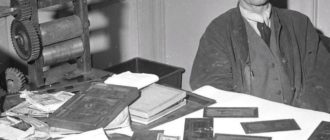Armenian miniature and ancient manuscripts
The culture of the Armenian people has been formed for many centuries in a row, in harsh conditions and under the threat of destruction. The Armenians were the first to adopt Christianity (according to historians in 301), for which they were persecuted and persecuted by the Roman emperors.
Nevertheless, Armenia became the first state with an official Christian religion, which pushed the development of culture and art. In ancient Armenia, a written language appeared, which was necessary for translating and rewriting the Bible. And in order for the illiterate people to better perceive what was written, the contents of the manuscripts were supplemented with bright drawings miniatures.
Until now, only 23 thousand medieval manuscripts have survived, which contain only about 5-7 thousand full-fledged miniatures. They are kept in the Matenadaran library, a famous repository in Yerevan. As a rule, they mainly illustrated the Gospel and the Bible, less often the Armenian chalice and tonakars. They wrote and painted manuscripts in special workshops at churches (grchatun).
Text and images were applied to parchment treated animal skin; a little later, scribes began to use paper, in the manufacture of which they did not use wood pulp. The preparation of parchment was a laborious and painstaking process with a dozen stages, a lot of ingredients and materials, but the result was simply stunning.
The parchment turned out to be thin, light and soft, it held the paint well. Text and images were applied with paints and ink, which were made by craftsmen (illustrators, gilders, jewelers, binders and scribes) using reed sticks and goose feathers. It was a delicate work that, despite its external fragility, retained its brightness after centuries of being in damp monastic cells and cellars.
After writing the text and drawing drawings, the parchment was sewn, “dressed” in special wooden plates, placed in frames made of gold, silver and ivory. For storage, cloth or leather covers were used. The frames themselves were richly decorated precious and semi-precious stones, colored glass, gems, chasing and filigree. Moreover, each of the schools, and there were several of them Tatev, Gladzor, Vaspurakan, Artsakh-Unitskaya, Crimean and Cilician, had its own technique and its own miniaturists.
Armenian miniature captured several historical stages: the early period includes the period up to the 9th century, then the era of Great and Lesser Armenia followed in the 11th-12th centuries, the 12th-14th centuries were distinguished by the flourishing of Cilician miniatures, and already in the 13th century there was a surge in Artsakh, Ani, Tatev Gladzor and Vaspurakan.
The Gospel of Queen Mlke, which is kept in the library of the Venetian Mkhitarists, dates back to 862. Named in honor of the second wife of the Armenian king Gagik Artsruni, who led the process of creating the manuscript. Today, the Gospel remains one of the main sources in the study of miniature.
The Etchmiadzin Gospel, which dates back to 989, has 233 leaves (35×28 cm) and four miniatures of the 6th-7th centuries. The manuscript is framed in ivory, and the text and images are in green, blue and gold.





























